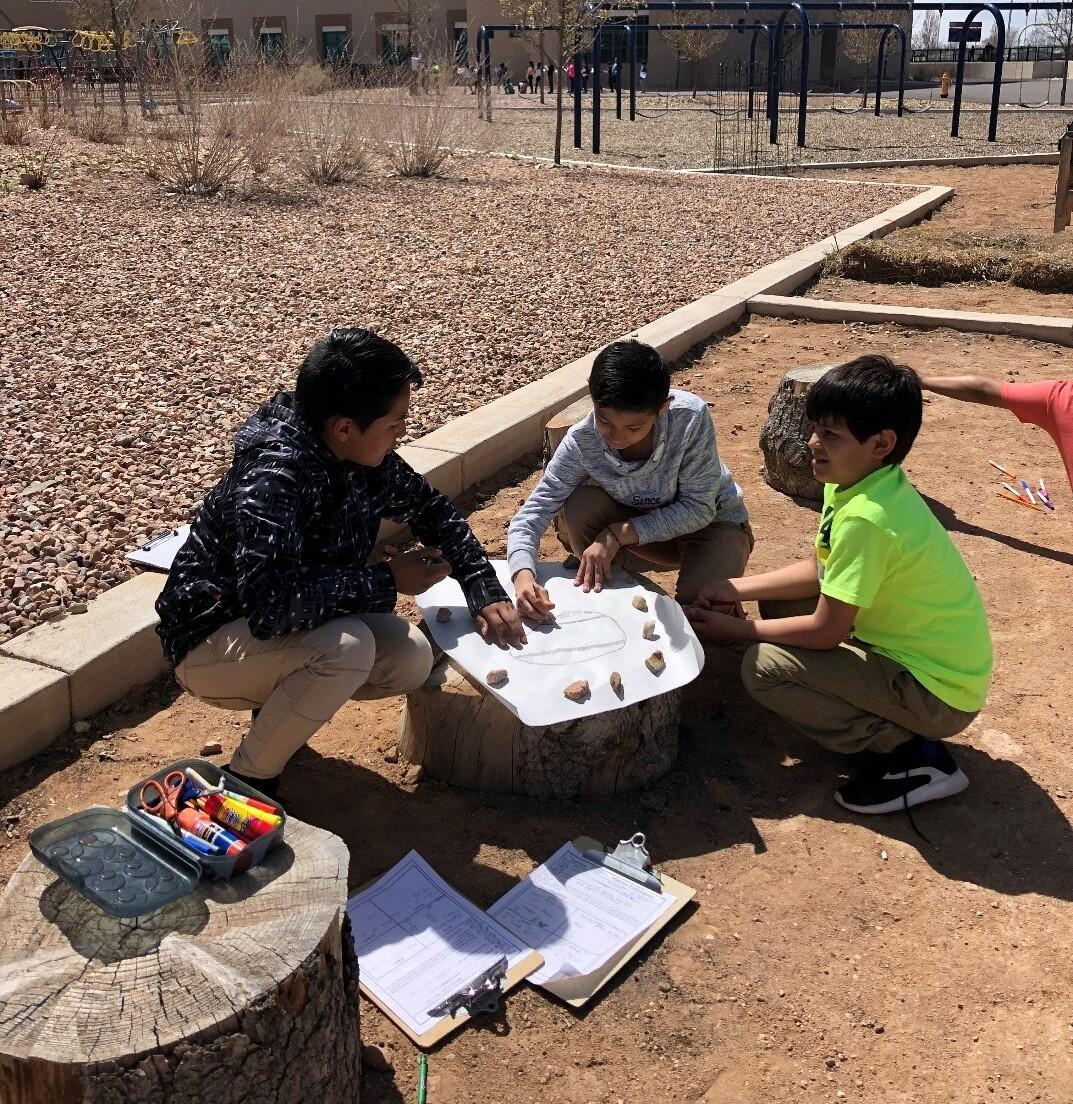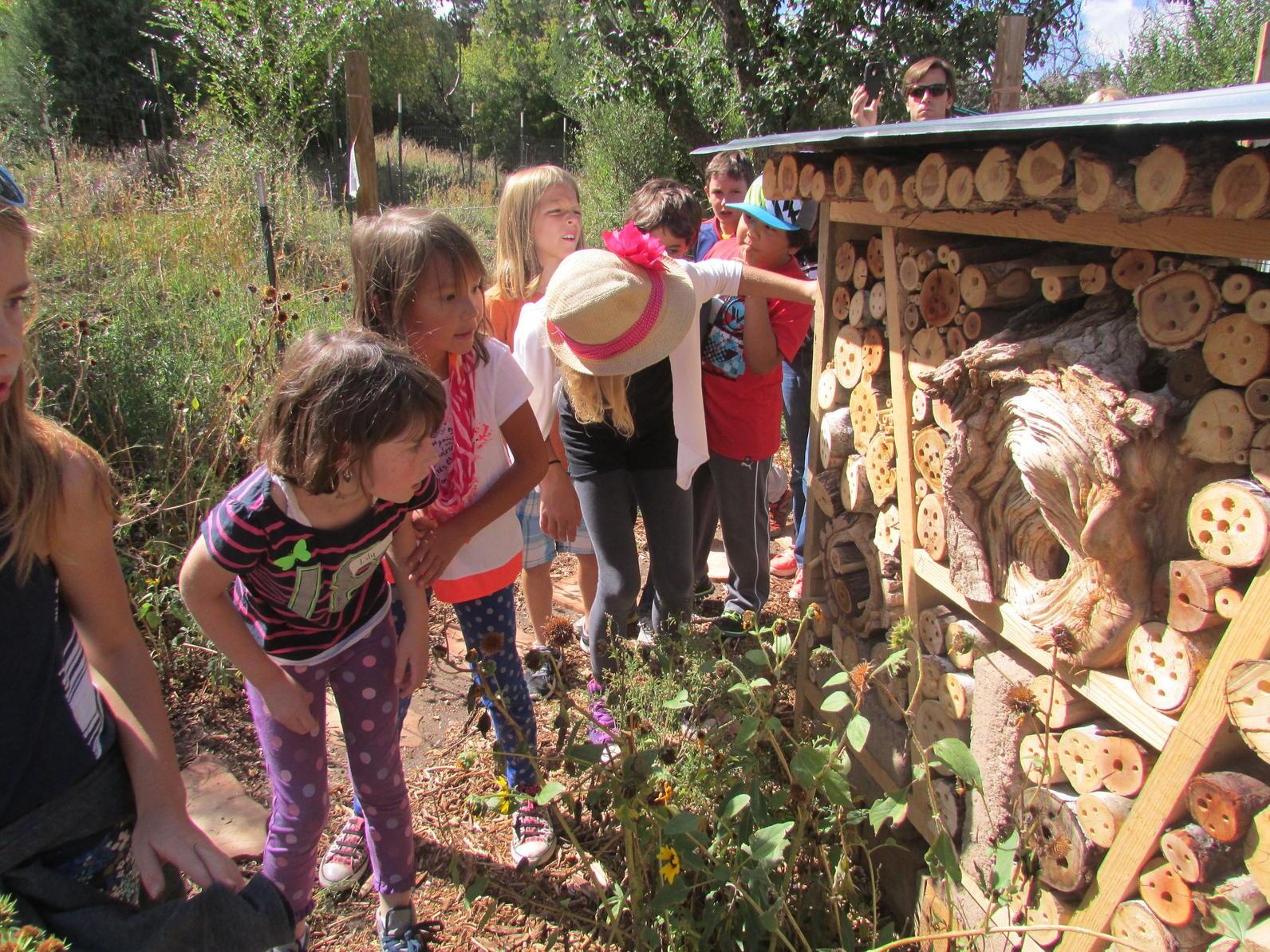This article originally appeared in the Spring 2020 edition of Tumbleweeds, the quarterly newspaper for Santa Fe families
New Mexico is home to over 150 different mammals, 500 birds, 100 amphibian and reptiles, and thousands of insect species! That is a lot of wildlife. So what can you and your family do in your backyard, on your balcony, or in your schoolyard to help wildlife thrive in your community?
One of the most important things that we can do for wildlife, particularly in urban settings, is provide habitat. Habitat is a place where animals live that provides food, water, shelter, air, and open space.
1. Grow native plants.
Plants are great providers of food, shelter, and water for New Mexico’s wildlife. So get your hands dirty! Planting a garden or even some pots on the patio can be lots of fun and perfect for the whole family. The more diverse and varied your plant types are, the better for wildlife! Try growing different sizes, shapes, and densities to provide the best options for animals. A variety of blooms and flowers will also attract pollinators like hummingbirds, butterflies, and insects. New Mexico’s native bees often build nests in the ground, so while you are planting be sure to leave some bare ground for these important pollinators. To find out which plants are most suitable in your area, visit audubon.org/native-plants. Local nurseries like Plants of the Southwest, Agua Fria, or Payne’s are great for finding New Mexico’s native plants.
2. Leave your yardwork for later
Forgot to mow the lawn? Didn’t tidy up the dead branches and rustling leaves? Good job! Wildlife need these “unkept” spaces to live. While lawns may be appealing to humans, things like leaf litter, overgrown plants, and deadfall is much more appealing to wildlife. Dead trees or snags provide important nesting sites for insects and perches for birds of prey. So leave them be, and see if you can spot a hawk surveying for dinner. Fallen leaves provide great food for insects, which in turn are food for many other animals. Weeds? No, those are just plants! All plants provide food for somebody, help to keep moisture in the soil, and reduce soil erosion. So don’t worry about your weeding this spring. You’re welcome!
3. Water is life
You don’t need a fancy bird bath or a water fountain to impress wildlife, any sort of water will do. To help reduce evaporation in the heat of the New Mexico sun, place your water basin or bowl in the shade. Top it off frequently. Keep insects safe by adding stones to create mini-islands that they can rest on.
4. Hungry? Us too!
With spring upon us, wildlife are returning from their winter vacation and hibernation. For some, this is a long, tiring journey and they are in search of a good meal. Put out bird feeders with fatty, high-energy foods, like nuts or block suet. A fun, early spring craft could be to make your own bird feeder. Find a pinecone and cover it in peanut butter. Then, roll it in sunflower seeds and hang it in front of your window. Hummingbirds have been travelling from Mexico and Central America when they arrive to New Mexico in early April. Greet them with nectar, by boiling 4 cups of tap water and adding 1 cup of white sugar to it. Stir, wait for it to cool, and put it in a feeder outside. Remember, no red dye for birds! Check out Santa Fe’s local Wild Birds Unlimited store for more tips and information.
5. Put up a bird house
Every spring, birds search for a safe place to lay their eggs. To protect them from hungry predators and Santa Fe’s variable weather, they need a nesting location that is just right. If you are particularly crafty, building a birdhouse is simple. With some scrap wood and a couple of tools, you can turn your backyard into a nest site. Organizations like nestwatch.org have nest box designs and more information on how to build a safe, successful home for your neighborhood birds. Then, find a quiet spot and wait. You will know a bird is nesting there when you see it coming back and forth with nest building materials.
6. Open up a bee hotel
Just like birds, bees are in search of a safe nesting site each spring. We often think of all bees as raising their young in a hive, but most of New Mexico’s native bees are solitary and prefer to nest in small, tight spaces all on their own. Insect “hotels” or “bee houses” can follow many different designs, so you can decide which one is best for your backyard. One easy option is to drill different sized holes in an old log or some scrap wood. When you see mud covering the entrance, you know someone is nesting in there! Once a bee has laid her eggs, she will leave layers of pollen and nectar for her young to eat. Another option is to bundle up some paper straws or hollow reeds inside some PVC pipe or a coffee can and hang it outside.
7. Build healthy soils
In order for any habitat to thrive, we need healthy soils! Composting is an effective way to increase the organic matter in soils, making them more rich and fertile, while also increasing their water-holding capacity. When we send food scraps to the landfill, they decompose without oxygen, releasing greenhouse gases into the atmosphere. By collecting and burying them in the ground, nutrients are recycled back to the soil. To avoid unwanted wildlife in your backyard, dig a small hole to bury your compost.
8. Capture rain water
In our dry Southwestern climate, we need to make the most of the rain that we receive. Instead of letting it run off and drain down the street, try to catch and reuse it. Grab a shovel and get a little dirty by digging small trenches in your backyard to redirect rainwater into your garden beds. Fill in your trenches with stones to prevent them from washing away. Another easy way to capture and keep moisture in your outdoor space is to mulch. Grass clippings, trimmed leaves, bits of bark, or whatever you have around will do. Just spread these materials out across bare soil to prevent evaporation.
9. Keep your feline friend inside
While we all love our furry friends, outdoor house cats are devastating bird populations around the world. In the United States alone, cats kill over 3 billion birds every year! By keeping these predators indoors, we can keep them safe while helping birds and other small animals thrive in urban habitats.
10. Learn about your wild neighbors
Sit outside, whether that is in your backyard, your neighborhood park, or your schoolyard and observe life around you. Learn the names and behaviors of the animals you see. Practice using your senses to observe your wild neighbors. Bring a notebook and record your observations. Try closing your eyes, listening for five whole minutes, and count all of the sounds that you hear and write them down afterwards. The more time you spend observing, the more you will notice. Most of all, enjoy learning about the natural world around you!




